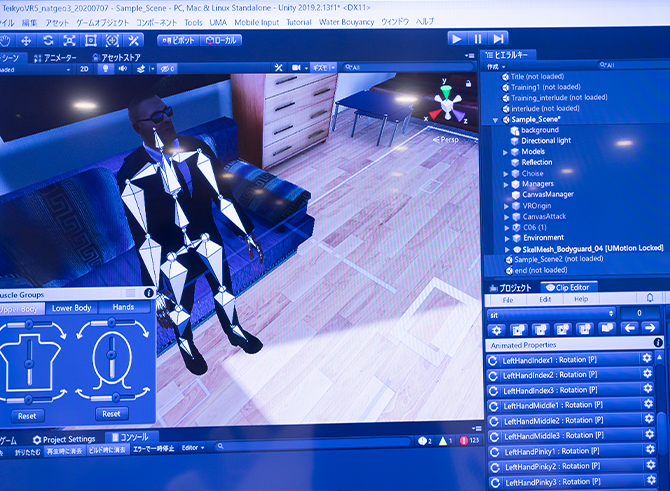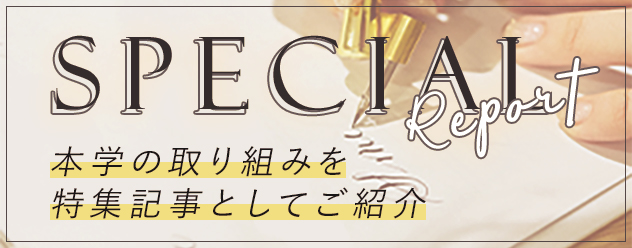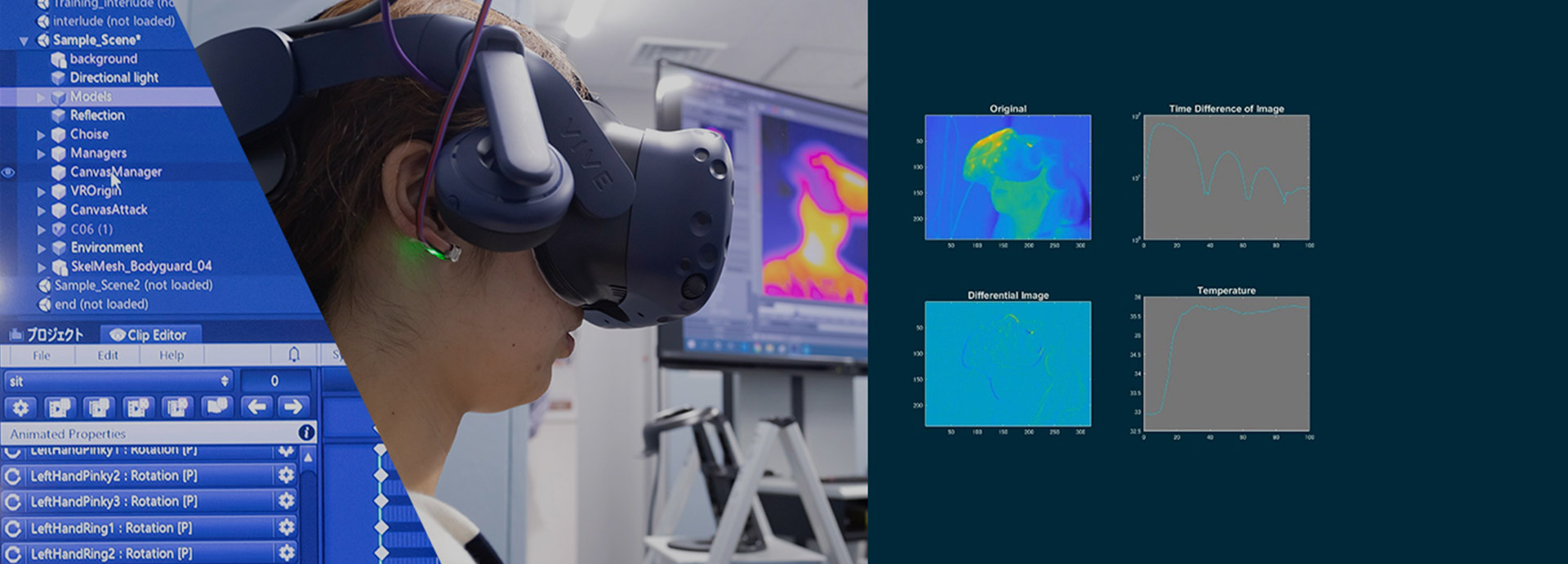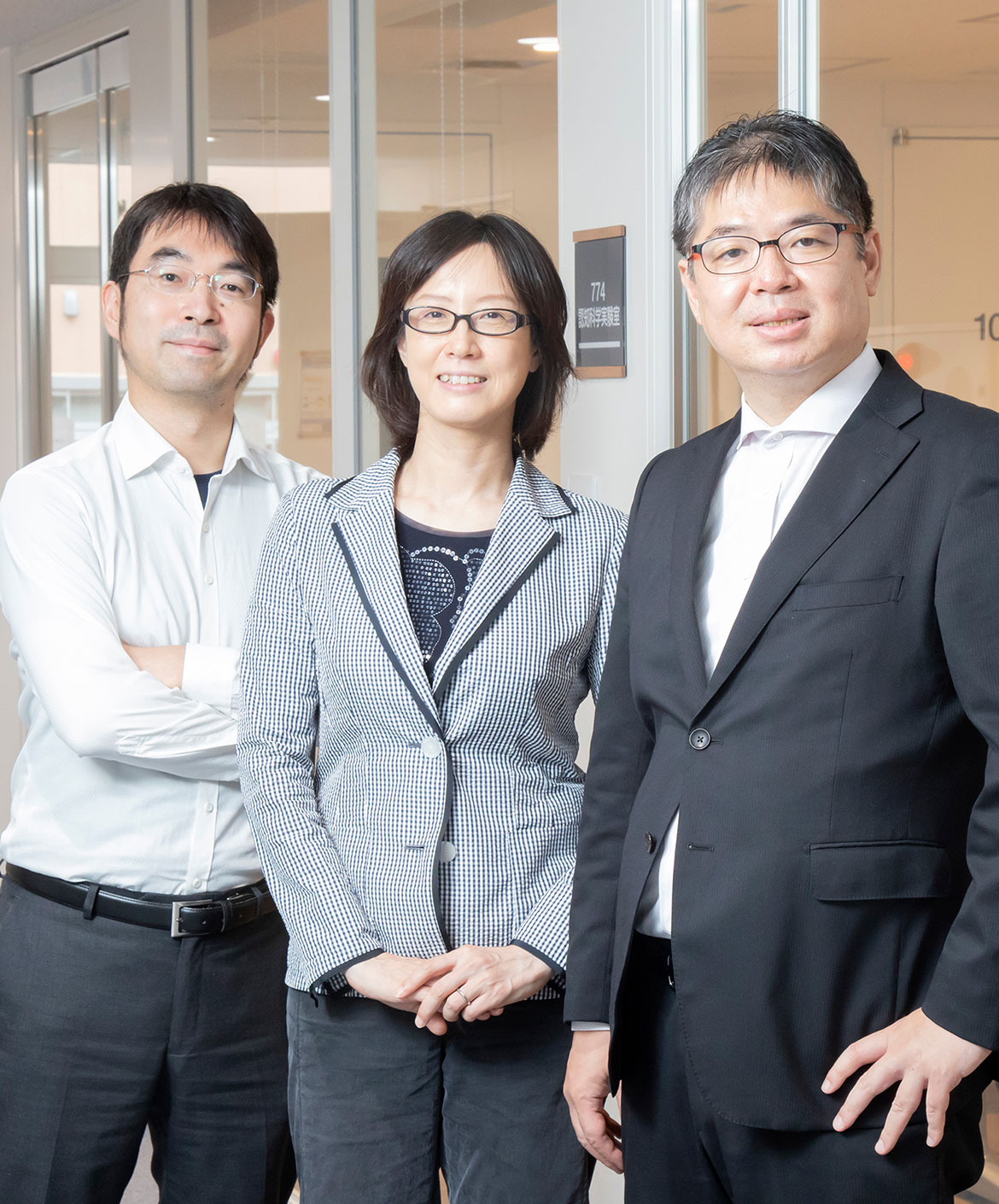When you meet a person who belongs to a group different from your own, the behavior of the person changes depending on the appearance of the other person.
Among them, attack and assistance are considered to be very important behaviors in psychology,
Understanding has not progressed due to the large restrictions on the implementation of the experiment.
In order to overcome that difficulty, the wisdom of various fields scattered throughout Teikyo University is gathered.
We constructed a virtual reality space as an experimental environment for social psychology.
By precisely measuring the biological information during the experiment,
We are trying to predict biological reactions and social behaviors derived from them in a specific environment.
Wisdom from 3 fields gathered
Build a VR experiment environment for social psychology
For example, suppose you encounter a person of a different race than you in a strange land. At that time, how do people receive information from the outside world and make decisions? A research project is underway to capture the changes that occur in the human body at that moment, make decisions, and observe through experiments until they act.
It is not the real world to carry out experiments. It is a world of omnidirectional (4π direction) VR (Virtual Reality) created in a computer. Participants in the experiment wear goggles called a head-mounted display (HMD) and enter the world of VR, which is the experimental environment. If you move your eyes or head in the world, things that look like reality will change, and you can move or touch what is there.

This research project, entitled "Predicting Social Behavior from Biological Reactions in Dynamic Intergroup Situations of Virtual Reality," was conceived by Professor Tomoko Oe of the Department of Psychology, Faculty of Liberal Arts. Professor Junichi Kotoku of the Graduate School of Graduate School of Medical Care and Technology Associate Professor Mitsuhiro Ogawa of the Department of Information and Electronic Engineering, Faculty of Science and Engineering, started with three people from different campuses and faculties.
"In psychology, research using VR has been conducted for a long time, but psychologists are users of VR to the last, and complicated programming and data analysis are not possible. Initially, we considered joint research with distant researchers. However, I learned that Teikyo University has researchers with high-quality achievements in VR-related research, and this project was realized. "(Professor Oe)
The avatars of the experiment participants can move freely
Create an omnidirectional VR space
In the VR world, which is an experimental field, experimental participants meet people with different attributes. Even if the participants are Japanese, the race, gender, age, etc. of the people they meet can be set freely. Experiment participants who entered the VR world are instructed to "attack" if the other party is doing dangerous acts, "rescue" if they are in trouble, and "watch" if there is no particular problem. .. The purpose of the experiment is to accurately measure the line of sight, biological reaction, and behavior selection of the experiment participants at that time.

"In order to examine the intergroup situation, it is necessary to prepare a specific experimental environment, gather a large number of experimental participants, and repeat the experiment in the same situation over and over again. However, to reproduce the behavior such as attack and rescue. Due to physical and ethical issues, it was difficult to experiment. In that respect, VR can be freely constructed in any environment, and experiments can be conducted safely in a completely controlled environment. , It is possible to measure various biological reactions in real time "(Professor Oe)
Professor Kotoku, who programmed the VR space and the movement of avatars, built the world's first VR visualization system based on the technology that calculates the intraoperative radiation dose in interventional radiology in real time. Has received numerous awards. He is a specialist who extracts information from medical 3D data by making full use of applied mathematics, and in this research, he is also developing a line-of-sight tracking system. "This research is not the end of developing the VR space, and the analysis of the data acquired here is also very important. I would like to analyze the line-of-sight data and various biological information to build a new mathematical model." (Professor Kotoku)


Takeshi Takada, a doctoral student in the Department of Division of Clinical Radiology Graduate School Graduate School of Medical Care and Technology who was in charge of programming, recalls that he struggled to control the movement of characters in the VR space. "Experimental participants decide whether to attack or rescue from the casual gestures of people they meet in VR space, so the character must move naturally. For that purpose, the range of movement of the joints, the speed of movement, VR Taking advantage of the experience of VR development for visualization of radiation dose, we finely controlled the environment, etc., and brushed it up while having Dr. Oe check it many times. "(Mr. Takada)


Non-invasively measure body temperature and pulse waves
Analysis of the relationship between psychological stimuli and biological reactions
During the experiment, biological reactions such as body temperature, heart rate, respiratory rate, and blood pressure are continuously measured. In the future, we will realize non-invasive measurement with VR goggles and measuring equipment embedded in the controller, and aim to conduct experiments without being aware that the experiment participants are being measured.
Associate Professor Ogawa, who specializes in biometrics, has developed and researched a futuristic health management system, "Daily Games, Daily Health," which allows you to understand your health status by performing biometric measurements during digital game play. We have developed a mechanism to calculate the pulse rate by measuring the pulse wave from the forehead with an optical sensor embedded in VR goggles. This device will be introduced in this project in the future.
"My aim is to analyze the relationship between psychological stimuli and living organisms. I can understand the activity of autonomic nerve function by analyzing fluctuations in pulse rate, and if it is an experiment in VR space, it is routine. You can also see the biological reaction to the slight psychological stimulus that occurs in the body temperature. For body temperature, both the skin surface temperature and the deep body temperature of the body center are measured, and the change and the difference between the two are used to detect the signs of the psychological stimulus. I'm thinking about it. "(Associate Professor Ogawa)


Deep temperature is an important psychological point, and Professor Oe also has high hopes. "In psychology, the relationship between temperature and body temperature and aggressive behavior has been pointed out for some time, but the relationship between biological reactions such as deep temperature and aggressive behavior has not yet been studied. Dr. Ogawa's research is very valuable in considering the relationship between behavior, thinking, and the body Professor."
Predict your thoughts and actions
Used as an educational support tool
The project that started in 2019 has just completed the preliminary experiment after building the VR experiment environment for about a year. Full-scale experiments have just begun, but first we will examine the relationship between temperature and offensive / assisting behavior. As an industrial application beyond that, "education support tools" that predict one's thought patterns and behaviors in various environments can be considered.
"For example, a person who has never been involved with a foreigner can experience a relationship with a foreigner in a VR space, and communication training can be done with a sense close to reality. You can know the tendency of thinking in advance. In addition, since mental stress that was difficult to experiment with until now can be easily verified in VR space, workers can build an optimal environment according to each workplace. It should be able to help improve the physical and mental health of people. "(Professor Oe)

There is a cognitive bias that inevitably arises when a person tries to interact with others or society. Many are unaware of that bias, but in this study we can use an indicator of biological response to make them aware of it. Such awareness may lead to better relationships with others. At first glance, it is an inorganic VR, but it has the potential to clarify the state of mind of people who are difficult to see and develop as knowledge of human understanding.





